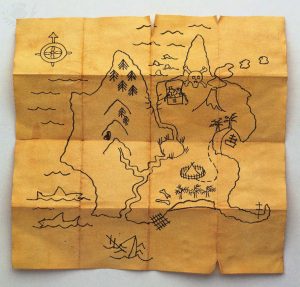Taking a daily walk with your family? Talk about your neighborhood. Point out homes, stores, parks and other favorite spots. What path do you take to get to each place? How do you find your way home again? Could you show other people how to get to your favorite places? People often use maps to find their way and to share directions with others. Try some of the books and activities about maps recommended by librarian Kathy from Jefferson Park Branch.
You may want to start by learning about the cardinal directions: north, south, east and west. Read about Leaf Man, who floats in the direction the wind blows him. You can use sidewalk chalk (or masking tape on the floor) to create a "leaf map" from this fun Follow the Leaves activity. Then practice using the cardinal directions to navigate from leaf to leaf, whether you have a compass or not.
Consider many different kinds of maps by reading Mapping Sam. Adventurous cat Sam explores her neighborhood, and maps of all types show her journey.
Explore any maps or globes you have at home to learn about parts of our Earth, including oceans and the seven continents. Try singing a song to learn the names of all the continents.
There are many ways to play with maps that help you understand directions and landmarks. Then map your neighborhood or just your block, like organized Henry does to show where everything belongs on his farm in Henry's Map.
Read Pete the Cat and the Treasure Map or try a pirate treasure game.
Create a make-believe map of a pirate or fairy kingdom. You could even bury a toy in the backyard (or hide it for an inside scavenger hunt), work together with a grownup or sibling to create a pirate treasure map, and challenge another family member to find your treasure.
Reflect on Your Learning
- What are the differences between your map of a real place and a map of an imaginary land?
- What was your favorite type of map to explore or create? Why?




Add a comment to: Finding Your Way: Maps for Kids